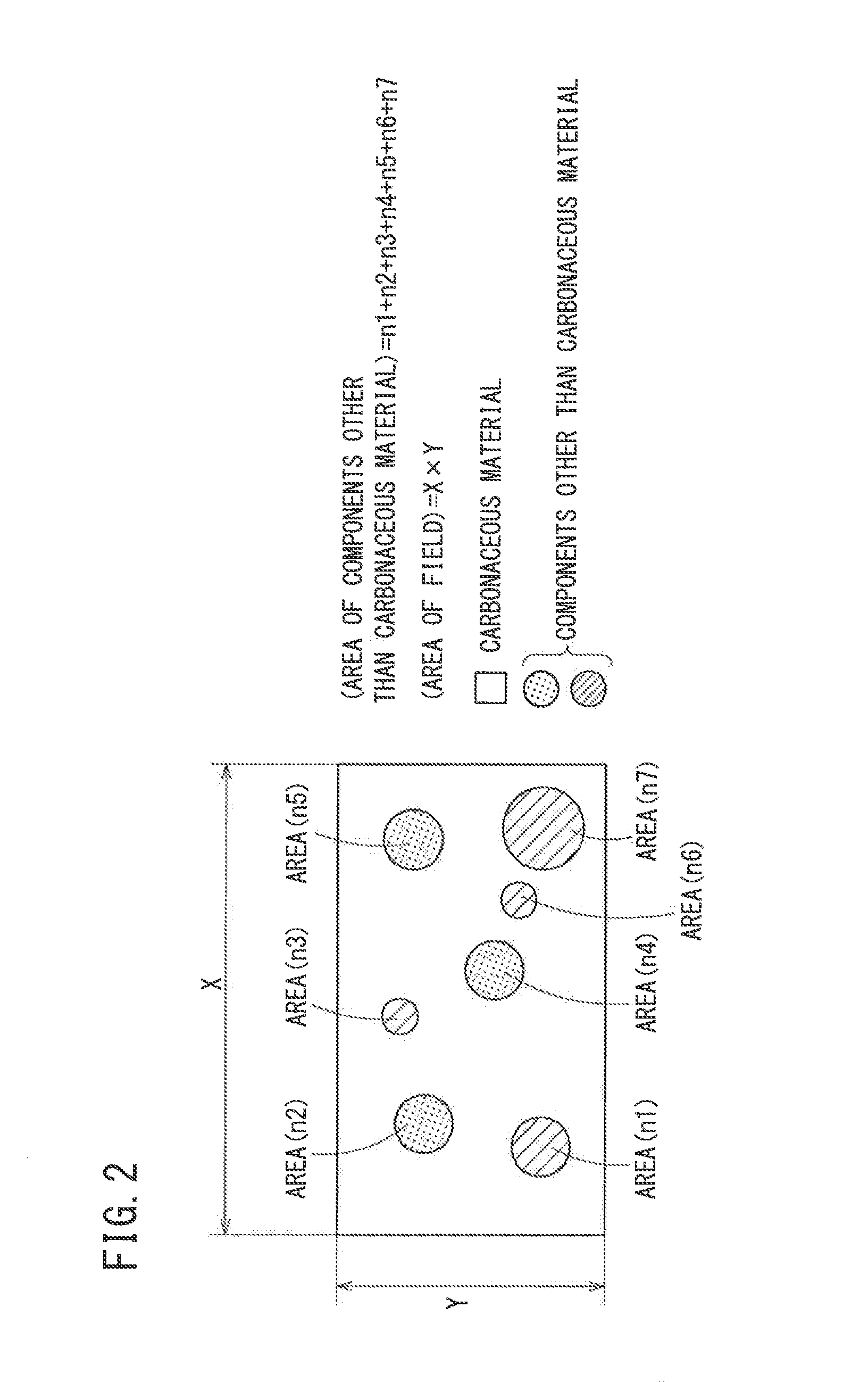All-Solid-State Cell
a solid-state cell, all-in-one technology, applied in the direction of non-aqueous electrolyte cells, cell components, sustainable manufacturing/processing, etc., can solve the problems of deterioration of charge-discharge cycle characteristics, decreased contact area between negative electrodes and solid-state electrolyte layers, and problems, etc., to achieve excellent charge-discharge cycle characteristics, high energy density, and increased capacity
- Summary
- Abstract
- Description
- Claims
- Application Information
AI Technical Summary
Benefits of technology
Problems solved by technology
Method used
Image
Examples
example 1
[0076]A positive electrode layer 12, a solid electrolyte layer 14, and a negative electrode layer 16 having the following compositions were formed to thereby produce an all-solid-state cell of Example 1.
[0077]The positive electrode layer 12 contained LiCoO2 particles, and the predetermined (003) crystal planes of the particles were oriented in a direction from the positive electrode layer 12 toward the negative electrode layer 16. This material is indicated by “Oriented LCO” in Table 1. The positive electrode layer 12 had a length of 10 mm, a width of 10 mm, and a thickness of 30 μm, as viewed from above. The solid electrolyte layer 14 had a garnet-type crystalline structure containing Li7La3Zr2O12 (LLZ). This material is indicated by “LLZ” in Table 1. The solid electrolyte layer 14 had a length of 10 mm, a width of 10 mm, and a thickness of 10 μm, as viewed from above. The negative electrode layer 16 contained an amorphous carbon as a carbonaceous material. This material is indicat...
example 2
[0089]An all-solid-state cell of Example 2 was produced in the same manner as Example 1, except that the amount of impurities added to the negative electrode layer 16 was changed. In Example 2, the carbonaceous material content was 83%, the energy density was 530 Wh / L, the initial irreversible capacity ratio was 40%, and the cycle characteristic was 69%.
example 3
[0090]An all-solid-state cell of Example 3 was produced in the same manner as Example 1, except that the amount of impurities added to the negative electrode layer 16 was changed. In Example 3, the carbonaceous material content was 90%, the energy density was 536 Wh / L, the initial irreversible capacity ratio was 40%, and the cycle characteristic was 70%.
PUM
 Login to View More
Login to View More Abstract
Description
Claims
Application Information
 Login to View More
Login to View More - R&D
- Intellectual Property
- Life Sciences
- Materials
- Tech Scout
- Unparalleled Data Quality
- Higher Quality Content
- 60% Fewer Hallucinations
Browse by: Latest US Patents, China's latest patents, Technical Efficacy Thesaurus, Application Domain, Technology Topic, Popular Technical Reports.
© 2025 PatSnap. All rights reserved.Legal|Privacy policy|Modern Slavery Act Transparency Statement|Sitemap|About US| Contact US: help@patsnap.com



